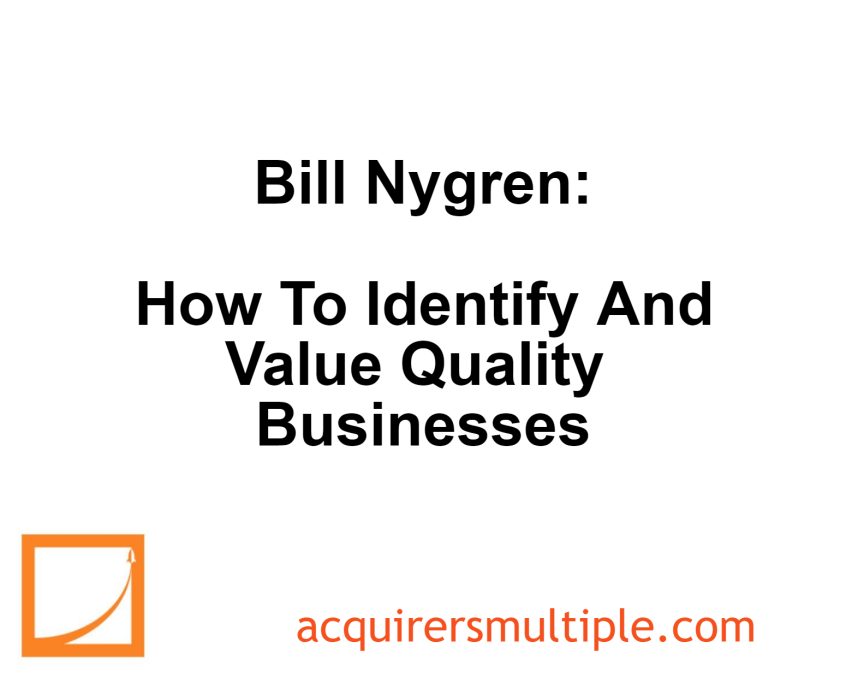During his recent interview with The Motley Fool, Bill Nygren discussed how to identify and value quality businesses. Here’s an excerpt from the interview:
Nygren: I recently read an interview with Berkshire Hathaway’s Todd Combs where he said the worst business imaginable is one that grows and needs infinite capital. I thought that was an interesting way to describe it because it shows that worse businesses exist than the typical low-multiple, low-growth cash cows.
Inverting that definition of worst would say the best businesses grow rapidly without needing much capital. Companies that we own or have recently owned that would fit that definition of great businesses would include Mastercard, Moody’s, and Alphabet.
Our process incorporates quality in several ways.
First, our analysts forecast out earnings for the next seven years, then apply a P/E multiple to that seven-year forward estimate that assumes the business becomes average over the next five years.
So, a higher-quality company would be accorded a higher current P/E multiple based on its higher expected near-term growth, higher cash return to owners, and lower discount rate due to lower risk.
Host: When picking stocks, do you consider an upside potential-to-downside potential ratio? If so, what do you look for?
Nygren: Kind of. First, instead of looking at how much a stock should go up if our forecasts prove accurate, we look at what percentage of our estimated business value the total debt and equity of a company currently sell at. Though that might sound like a distinction without a difference, it is a very meaningful difference for levered businesses.
Here’s a simple example: Business 1 has no debt, its market cap is $80 billion and we think it is truly worth $100 billion. If we are right, the stock has 25% upside.
Now consider Business 2, which is also deemed to be worth $100 billion, but it has $80 billion of debt and the stock sells for $10 billion. You could say that if we are right, the stock could double from $10 to $20 billion.
But we would look at those two companies and say Business 1 is cheaper. Its total price is $80 billion whereas Business 2 has a total price of $90 billion. So, we could be off on our valuation estimate of Business 1 by 20% before we were paying the full value, but our cushion is only 10% on Business 2.
We also penalize companies where we believe the range of possible earnings is wider and where we believe management or business quality are less positive. Though we don’t end up with a simple upside to downside ratio, we are trying to measure both upside and downside. We adjust both our buy/sell targets and our position sizes accordingly.
You can read the entire interview here:
Bill Nygren Interview – Motley Fool
For all the latest news and podcasts, join our free newsletter here.
Don’t forget to check out our FREE Large Cap 1000 – Stock Screener, here at The Acquirer’s Multiple:



